P'ore over the map of biblical Corinth and discover how its strategic location influenced Apostle Paul's letters and the narratives of the New Testament.
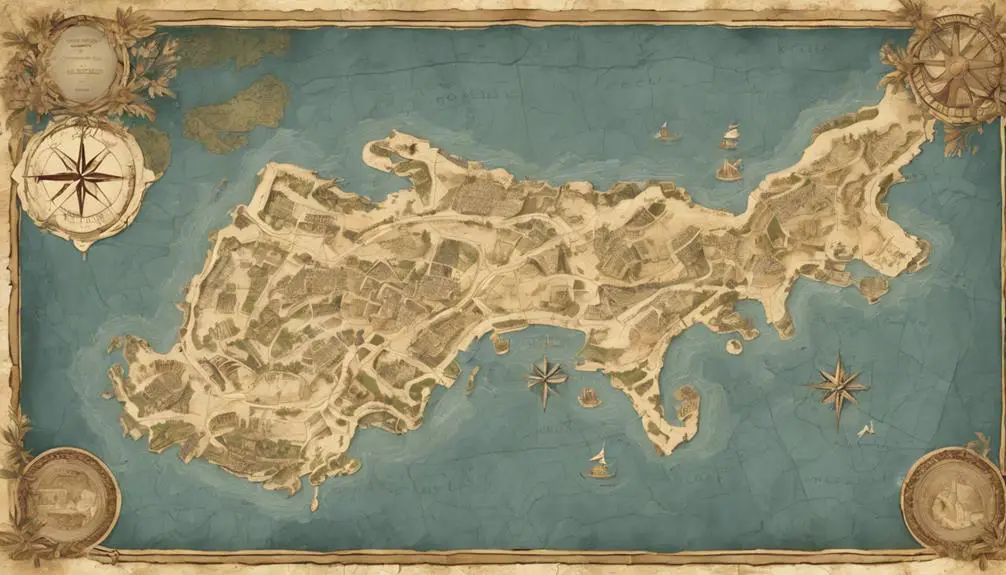
Map of Corinth in the Bible
Just by chance, did you know that Corinth, a significant city in the Bible, was a bustling metropolis in its time? As you explore the historical and geographical context of this ancient city, you'll notice that its location had a pivotal role in the narratives of the New Testament.
Apostle Paul's letters to the Corinthians can provide a different perspective when you consider the city's strategic position on the map. But what if we could delve deeper into the biblical map of Corinth? Would it change your understanding of these biblical stories?
Let's embark on this journey together.
Key Takeaways
- Corinth's strategic location between major ports facilitated apostle Paul's arrival and the establishment of early Christian community.
- Paul's teaching in Corinth for 18 months played a significant role in shaping the early Christian community, addressing prevailing moral issues.
- Archaeological findings in Corinth, including pagan temples and artifacts, provide insight into the city's pre-Christian religious culture and trade networks.
- The transformation of Corinth, from a city known for immorality to one of spiritual redemption and renewal, exemplifies the transformative power of faith.
Historical Overview of Corinth
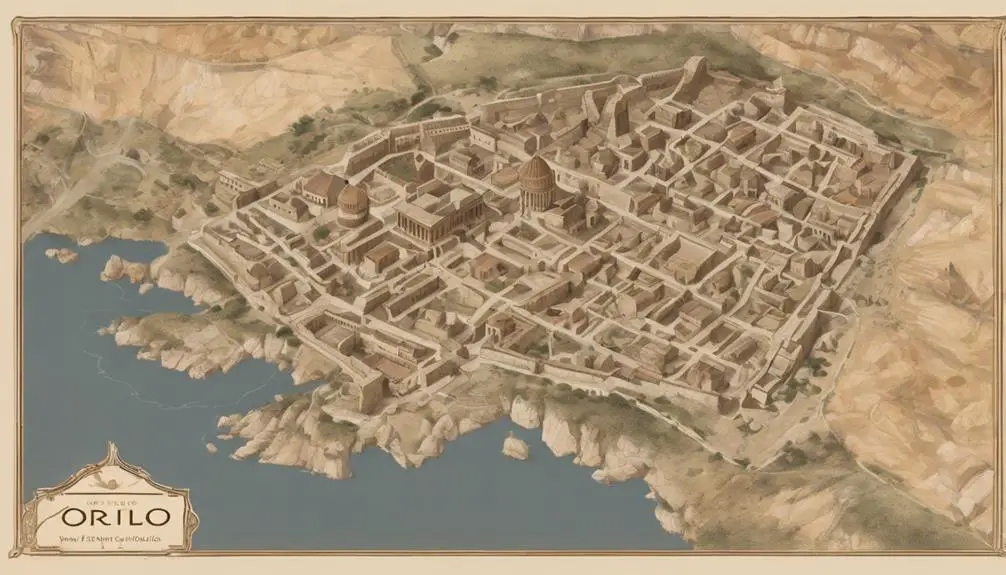
Diving into the rich tapestry of Corinth's past, you'll find that this ancient city's history is as complex as it's fascinating, with its inception dating back to the Neolithic period. Corinth's economy was an intricate system, the backbone of which was trade and craftsmanship. The city's strategic location between two major ports played a pivotal role in its economic prosperity, making it a central hub for traders and merchants from various parts of the ancient world.
Cultural influences were equally significant in shaping the city's identity. The mingling of different cultures, primarily Greek and Roman, created a unique blend of traditions, beliefs, and practices. This cultural hybridity manifested in various aspects of Corinthian life, from its architecture to its religious practices, and even in its economic system. The city's richly diverse cultural milieu fostered the growth of arts and philosophy, which greatly influenced the society's perception and worldview.
Examining Corinth's historical trajectory, you'll appreciate how the economic strategies and cultural influences of this ancient city have shaped its identity and legacy. It's not just a story of growth and prosperity; it's a testament to the city's resilience, adaptability, and enduring cultural impact.
Corinth's Geographical Location

Have you ever wondered why Corinth held such a pivotal role in ancient trade and cultural exchange? Corinth's geographical location holds the answer. Nestled on a narrow isthmus between mainland Greece and the Peloponnese, Corinth was a gateway between East and West, North and South. This strategic position made it a hub for trade and communication routes, thus amplifying its significance in ancient times.
Corinth's climate was another crucial factor that shaped its prominence. The mild, Mediterranean conditions were conducive to agricultural activities, primarily the cultivation of grapes and olives. These thriving local industries further bolstered Corinth's economy, enhancing its appeal to traders and merchants.
The impact of trade routes on Corinth can't be overstated. The city's location enabled it to control land and sea trade routes, fostering immense wealth and cultural diversity. The Diolkos, a paved trackway enabling ships to be moved overland across the isthmus, further augmented Corinth's commercial advantages.
Biblical References to Corinth
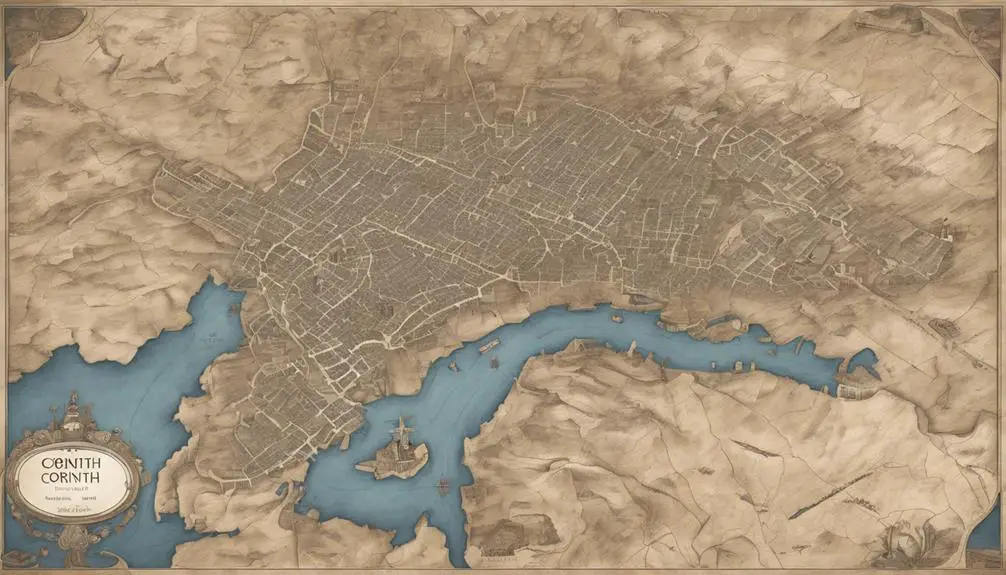
Building on Corinth's rich geographical and economic history, let's explore its biblical significance, an aspect that further underscores its enduring relevance. The city of Corinth is mentioned multiple times in the New Testament, primarily in the context of Saint Paul's Letters. These epistles not only reveal the nature of the early Christian church but also provide insights into the Corinthian culture, painting a vivid sociocultural picture of the times.
Diving into the biblical texts, you'll find that the Corinthians were known for their intellectualism and love for philosophy, which was often reflected in their complex theological questions. However, their culture was also marked by divisions, spiritual immaturity, and immorality, prompting Saint Paul to address these issues directly in his letters.
The biblical references to Corinth are deeply entrenched in the city's sociocultural fabric, providing a profound understanding of the city's religious dynamics and its correlation with the Christian faith. The Bible's depiction of Corinth is an amalgamation of its rich history, complex culture, and deep-seated faith, offering an intricate tapestry that stands testimony to its enduring relevance. This exploration gives you a unique perspective, allowing you to appreciate the city's biblical significance beyond its geographical and economic history.
Apostle Paul's Connection to Corinth
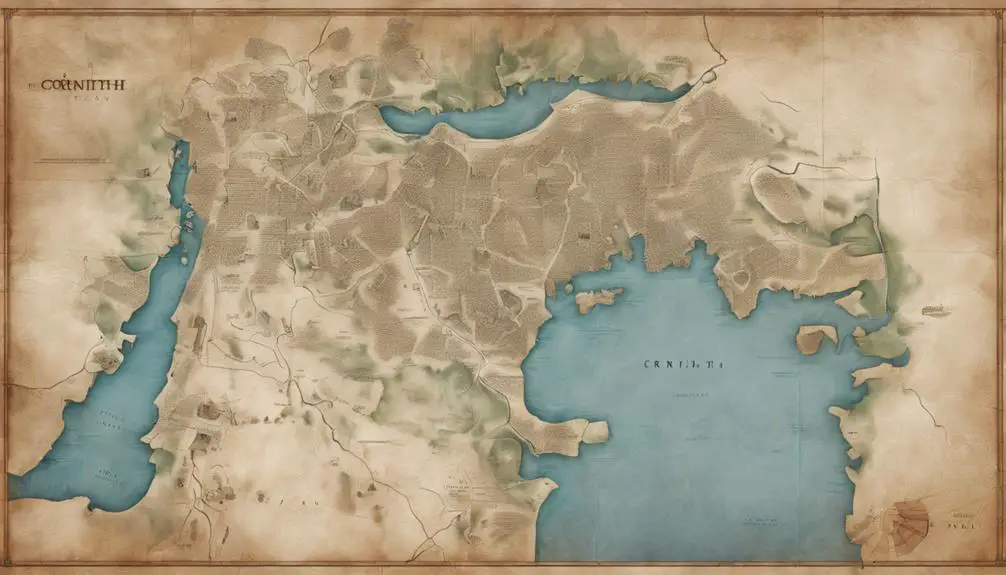
Delving into Apostle Paul's association with Corinth, you'll discover that his profound influence and teachings greatly shaped the early Christian community in the city. After Paul's Conversion on the road to Damascus, he became a central figure in the spread of Christianity. Notably, his entry into Corinth in AD 51 marked a significant period in religious history.
You'll find that Paul worked diligently in Corinth for 18 months, teaching the word of God. His efforts weren't without controversy or conflict, as his teachings often clashed with local beliefs and practices. Nevertheless, Paul's influence led to the establishment of a strong Christian community that survived long after his departure.
In addition, Paul's correspondence with the Corinthian believers, known as the Corinthian Letters, provides invaluable insights into his teachings and the challenges faced by the early Christian community. These letters, First and Second Corinthians, are full of cautionary advice, rebukes, and encouragement. They reflect Paul's deep concern for the Corinthians' spiritual welfare and his unwavering commitment to guide them through the complexities of their faith.
Archaeological Discoveries in Corinth
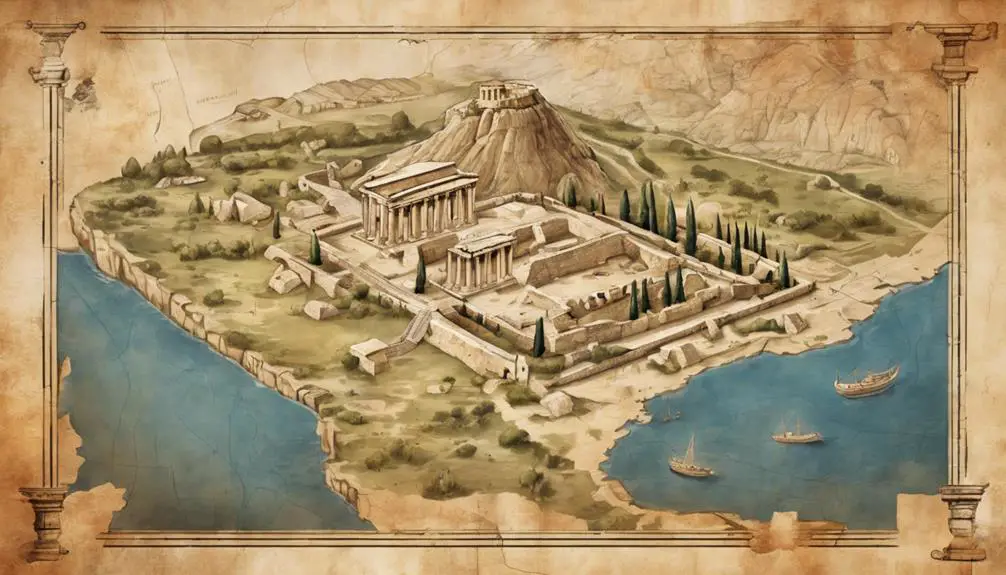
Moving onto the archaeological discoveries in Corinth, you'll find that they've significantly contributed to our understanding of the city's rich cultural and religious history. The unearthed artifacts and structures not only provide a snapshot of life in ancient Corinth but also shed light on the city's extensive trade routes and religious practices.
Corinth's strategic location made it a hub for commerce. Excavations have revealed artifacts from as far as Asia and Africa, underscoring the significance of Corinthian trade routes in the ancient world. These artifacts, ranging from pottery to coins, have helped scholars reconstruct the city's commercial networks and economic vitality.
Another fascinating aspect of archaeological findings in Corinth is the discovery of pagan temples. These structures, dedicated to gods like Apollo and Aphrodite, offer unique insights into Corinth's polytheistic religious culture. The grandeur of these temples, reflected in their elaborate architecture and intricate sculptures, speaks volumes about the city's religious devotion and artistic prowess.
Mapping Corinth: Visual Guide
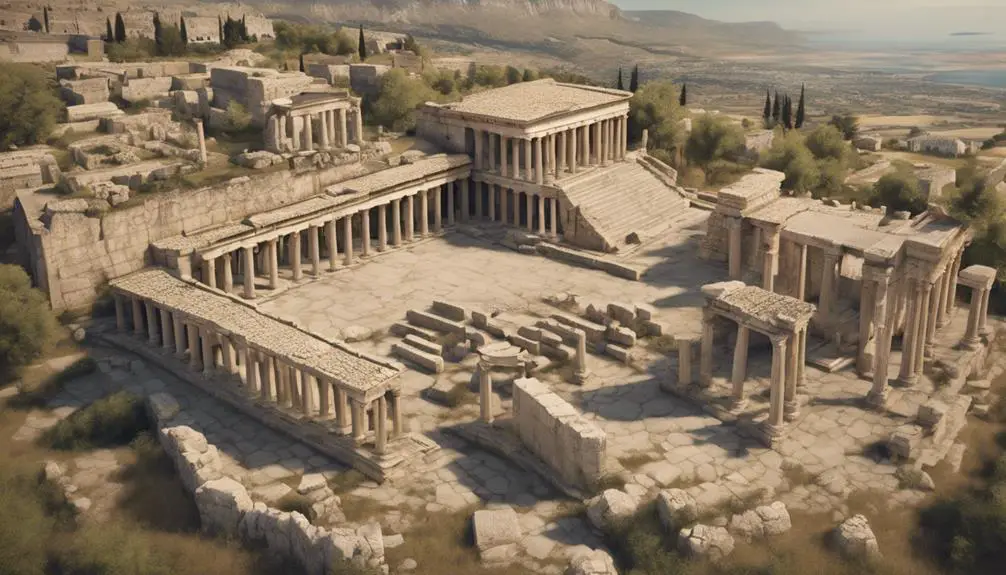
As you journey through the rich archaeological findings of Corinth, it's essential to have a visual guide that helps map out the city's ancient layout and key sites. This map serves as a vital tool in understanding the city's complex past, enabling you to trace the remnants of ancient architecture scattered throughout Corinth.
In the heart of the city, you'll find the ruins of the Temple of Apollo, an iconic example of Doric architecture. Its monolithic columns and distinct frieze provide a glimpse into the artistic prowess of Corinth's ancient inhabitants. You'll also discover smaller, less conspicuous sites such as the Peirene Fountain, intricately adorned with Corinthian artwork, further emphasizing the city's architectural diversity.
The Bema, a prominent public platform, is another notable feature on the map. It's where significant political and legal proceedings took place, offering a slice of Corinth's sociopolitical history.
Finally, the visual guide leads you to the city's outskirts, where you can explore the Acrocorinth fortress. This towering structure is a testament to Corinth's strategic importance, offering a panoramic view of the city's layout.
In essence, this visual guide serves as a conduit to the past, allowing you to appreciate Corinth's archaeological richness and cultural legacy.
Understanding Corinth's Biblical Significance
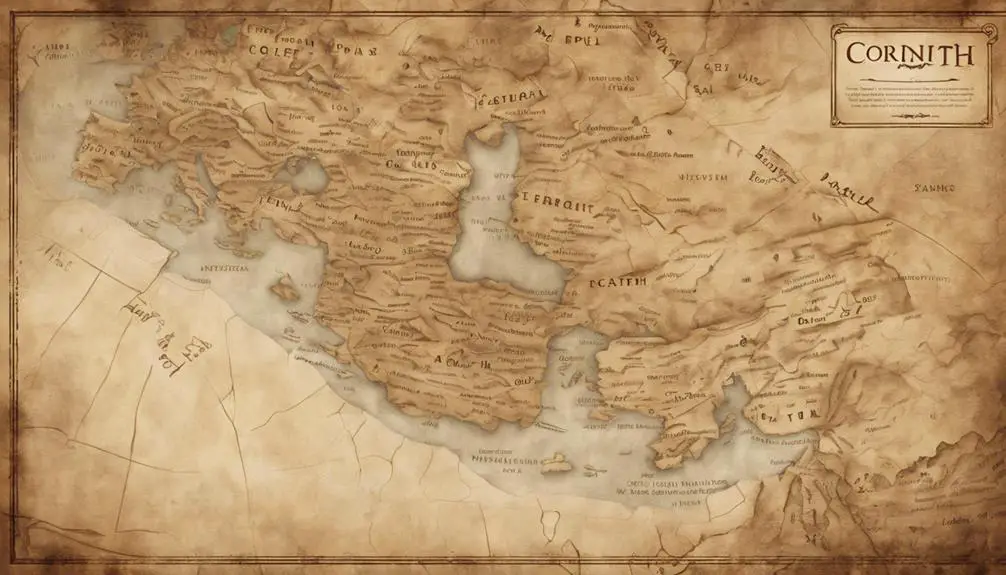
Beyond the architectural and historical significance, you'll find that Corinth holds a deep biblical relevance, particularly in the context of Apostle Paul's missionary journeys and his letters to the Corinthians. It was in Corinth that Paul established a thriving church, despite the city's notorious immorality.
Corinth's morality, or rather immorality, was a significant backdrop to Paul's teachings. The city, known for its vice and debauchery, stood in sharp contrast to the spiritual transformation Paul advocated. His letters to the Corinthians address issues of sexual immorality, idolatry, and divisions among believers, directly confronting the city's ungodly practices.
Paul's letters also outline the transformation that Corinth's citizens underwent upon accepting the Gospel. This spiritual transformation was significant, a radical shift from the city's former debauchery. It served as a pivotal example of the transformative power of faith, a model of redemption in the midst of corruption.
In essence, Corinth's biblical significance lies in its representation of the transformative power of the Gospel. It symbolises how a city steeped in immorality can experience profound spiritual transformation through faith, demonstrating the enduring relevance of Paul's teachings. Understanding Corinth's biblical significance, therefore, provides valuable insight into the transformative power of faith in the face of deep-seated immorality.
Frequently Asked Questions
What Were the Main Economic Activities in Corinth During Biblical Times?
In Biblical times, you'd find Corinth bustling with various economic activities. The city thrived on its strategic location along Corinthian trade routes, enabling a prosperous trade in goods like pottery, bronze, and textiles. It's also known for the 'Corinthian order' in architecture.
Furthermore, the Biblical Corinth society engaged in agriculture, particularly vineyards and olive groves. So, trade and agriculture were the main economic drivers in Corinth during those times.
How Does the Map of Corinth in the Bible Differ From the Modern Map of Corinth?
When comparing the biblical and modern maps of Corinth, you'll notice significant differences. The ancient city held immense religious significance, with locations tied to Biblical teachings not present on today's map.
Modern Corinth has evolved, featuring contemporary infrastructure and landmarks. However, its biblical history remains an integral part of its identity, despite these physical changes.
Analyzing these maps offers a detailed glimpse into the transformation of this historically rich city.
Were There Any Significant Architectural Structures in Corinth Mentioned in the Bible?
Yes, there were significant architectural structures in Corinth mentioned in the Bible. You'll find references to Corinthian art influences, particularly in the New Testament.
Paul's letters to the Corinthians highlight the city's rich architectural landscape. Although specifics aren't detailed, the Biblical references provide insights into the grandeur that was Corinthian architecture.
How Did the Geographical Location of Corinth Influence Its Role in Biblical Events?
You're examining Corinth's strategic importance and its biblical significance. Its location on a narrow strip of land between two seas made it a major trade hub, influencing many biblical events.
Even St. Paul's missionary work was impacted by this bustling commerce. So, you see, Corinth's geography played a key role in shaping its biblical narratives.
It's not just about where it's on a map, but how that location influenced historical events.
What Languages Were Spoken in Corinth During the Time of the Bible?
When you're delving into the Corinthian culture during the biblical era, you'll find that the primary languages spoken were Greek and Latin. These languages significantly influenced biblical interpretation.
Greek was the lingua franca of the eastern Mediterranean, and Latin was used by the Romans, who controlled Corinth. This multilingual environment enriched the cultural landscape and influenced the narratives found in biblical texts.
Conclusion
In understanding the map of Corinth, you've journeyed through its rich history, geographic importance, and biblical significance.
You've followed Apostle Paul's footsteps and delved into archaeological findings.
This exploration not only enriches your biblical comprehension but also brings to life the vibrant tapestry of Corinth's past.
Whether a scholar or a curious mind, the depth and layers of Corinth's narrative offer a compelling exploration into this pivotal biblical location.



Sign up